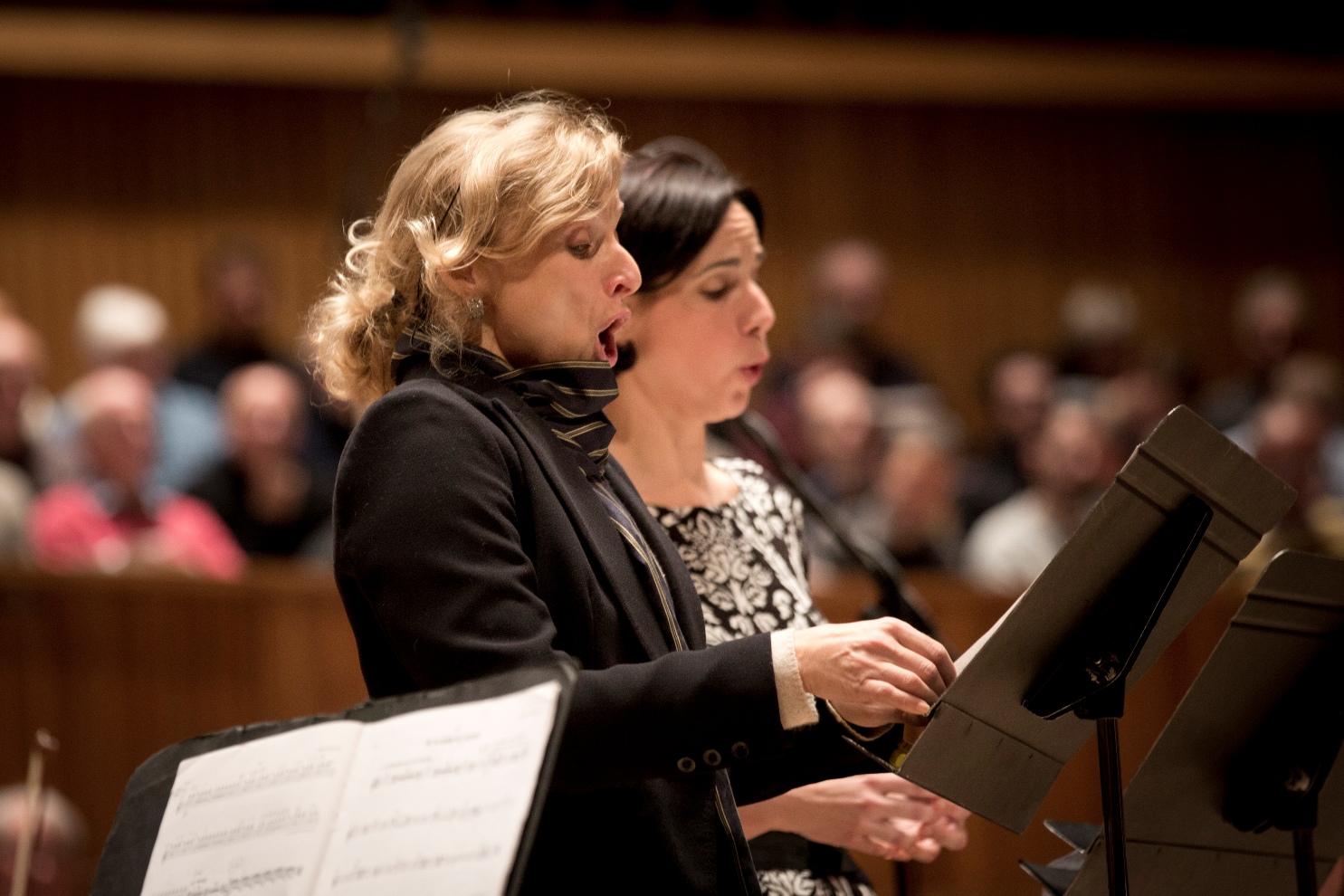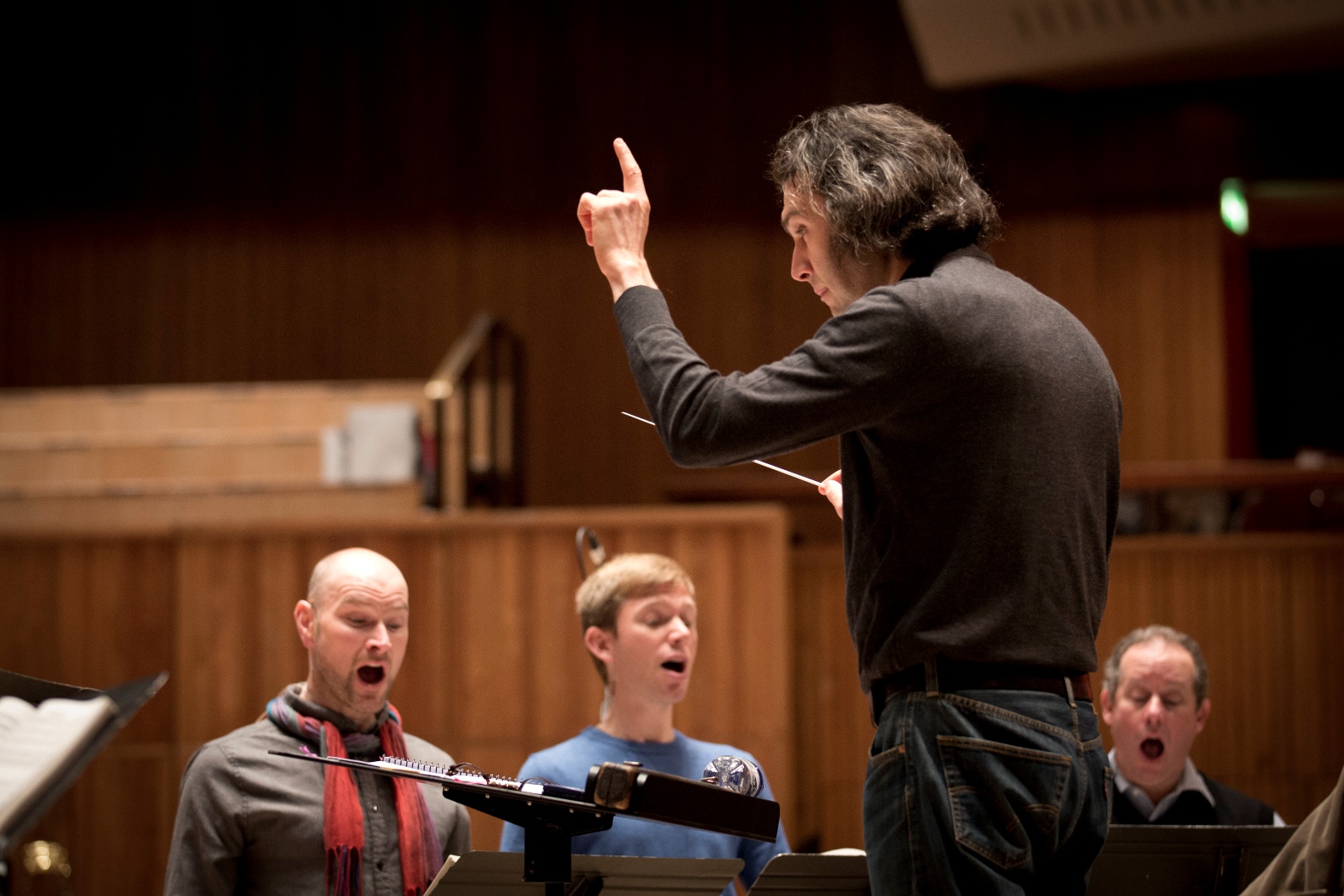John Adams’ millennial conflagration of musical poems about childbirth, destruction and the divine made manifest not only served as a seasonal farewell and a transcendent epilogue to the Southbank’s year of 20th-century music The Rest is Noise; it also stood pure and proud as a masterpiece.
This is what maverick director Peter Sellars’ multimedia information overload had not allowed this already complex work to seem in the Barbican performance following the December 2000 Paris premiere (Adams soon came to admit the mistake of giving free rein to his usually trusty collaborator). God knows the music is complex enough, an exhausting experience for listeners, singers and especially the orchestral strings. We could only be humbled by the incredible achievement of the dedicated forces Vladimir Jurowski had mustered for the special occasion.
El Niño’s Janus-headed nature is adumbrated in its title: both The Child in Spanish, the infant Jesus, and the destructive force of nature, though that role here is taken by inhumanity, not the regenerative forces beyond our control. Part One is devoted to the Virgin birth. There is nothing chaste about the orgasmic, flaming strings hinting at the rampant sex life of the angels or the cumulative thrust which ties the threads together as Adams giddyingly juxtaposes an English translation of Chilean poet Gabriela Mistral’s "The Christmas Star" with Hildegard of Bingen’s "O quam preciosa".
 Part Two introduces unease with the three kings’ arrival via Herod’s court and explodes with horror at his massacre of the innocents, pole-axingly counterpointed by "Memorial for Tlatelolco", the superlative Mexican poet Rosario Castellanos' devastating indictment on the silence following the brutal 1968 suppression of the youth revolt. Adams’ mastery of Spanish inflection - an achievement equal to George Crumb's Lorca settings - does for her genius what Britten achieves with Wilfred Owen’s poetry in War Requiem. The comparison is not exaggerated, and especially apt in the final setting of a delicious, naïve pseudo-Gospel fantasy around the rest on the flight into Egypt again paralleled by a Castellanos setting, for children’s choir fading into infinity.
Part Two introduces unease with the three kings’ arrival via Herod’s court and explodes with horror at his massacre of the innocents, pole-axingly counterpointed by "Memorial for Tlatelolco", the superlative Mexican poet Rosario Castellanos' devastating indictment on the silence following the brutal 1968 suppression of the youth revolt. Adams’ mastery of Spanish inflection - an achievement equal to George Crumb's Lorca settings - does for her genius what Britten achieves with Wilfred Owen’s poetry in War Requiem. The comparison is not exaggerated, and especially apt in the final setting of a delicious, naïve pseudo-Gospel fantasy around the rest on the flight into Egypt again paralleled by a Castellanos setting, for children’s choir fading into infinity.
As the music travels with Adams’ unique sense of flying through space – the feet barely touch the ground until Mary’s conception meets with Joseph’s dismay – the use of soloists and choir shifts ever more kaleidoscopically between narration and roleplay. How was it going to be possible to forget the original 2000 incarnations of feminine heat and wisdom, Dawn Upshaw and the late, lamented Lorraine Hunt Lieberson? Jurowski’s soloists achieved the miraculous in putting their illustrious predecessors out of mind for the duration.
In Rosemary Joshua we had a maiden radiant in her Magnificat - a short reminder of Pat's sublime solo "This is Prophetic" in Nixon in China - and a committed chronicler of the Tlatelolco massacre, the dark and multi-layered high point of Part Two. The presence of Kelley O’Connor (pictured above with Joshua in the first of two rehearsal photos by Ben Ealovega) with her fabulous contralto register and unique sound matched Joshua's for sympathy and commitment. I dare say Matthew Rose is even a more focused musician for the challenges of the even more chameleonic bass role than the premiere's Willard White; the post-Handelian judderings of the near-impossible “Shake the Heavens” were absolutely magnificent, and of the rare moments in the Adams universe where time freezes, the apocryphal Gospel of James’ narration of Joseph observing nature at a standstill could not have been more movingly delivered, with the two notes of the piccolos heightening the atmosphere.
 These three's unexpected narrative-trio role in Part Two tested their mastery of Adams' tricky rhythms to the limit, and they just about pulled it off. To complete the dedicated group, we were equally lucky to have the three countertenors who sang at the premiere and two of whom participated in Adams’ equally rich The Gospel According to the Other Mary earlier this year – Daniel Bubeck, Brian Cummings and Steven RIckards (pictured above with Jurowski). Were they and the other singers miked? That I couldn’t always be sure is the highest compliment to whatever role Mark Grey’s sound design may have played.
These three's unexpected narrative-trio role in Part Two tested their mastery of Adams' tricky rhythms to the limit, and they just about pulled it off. To complete the dedicated group, we were equally lucky to have the three countertenors who sang at the premiere and two of whom participated in Adams’ equally rich The Gospel According to the Other Mary earlier this year – Daniel Bubeck, Brian Cummings and Steven RIckards (pictured above with Jurowski). Were they and the other singers miked? That I couldn’t always be sure is the highest compliment to whatever role Mark Grey’s sound design may have played.
Jurowski’s main task was to give the clearest of beats and cues with his ineffable stick technique, and his London Philharmonic players registered the host of inspired ideas so beautifully that you wanted to weep at their transience (there’s enough material in here for half a dozen works). No doubt the conductor was also responsible for the extra blaze of inspiration in the more apocalyptic choruses. Is this the first time an amateur group has tackled them? I don’t know, but the London Philharmonic Choir went the last inch in the big blazes. Full marks to the girls and boys picking up their interrupted chant in the final radiant simplicity of Castellanos’ “A Palm Tree”, as unexpected as anything in this rainbow-hued work of genius.
Last word should go to the Southbank’s year-long achievement. Moan as some of my colleagues might have done about certain aspects of The Rest is Noise, we were none of us present enough at the astonishing weekends of special events to have more than a vague idea of how valuable Jude Kelly’s idea to contextualise the 20th century’s musical masterworks has been. A real hunger exists for such context, and the figures as well as the healthy presence of youth in the concerts I witnessed speak volumes: a hall attendance of never less than 1800, LPO chief executive Tim Walker told some of us in the interval, when guesstimates of the maximum audience available for contemporary music in each of the big cities stands at 700. There’s a sea-change in the perception of the “classical contempoary” sphere; now it’s up to the Southbank and its fellow institutions to build on success.















Add comment